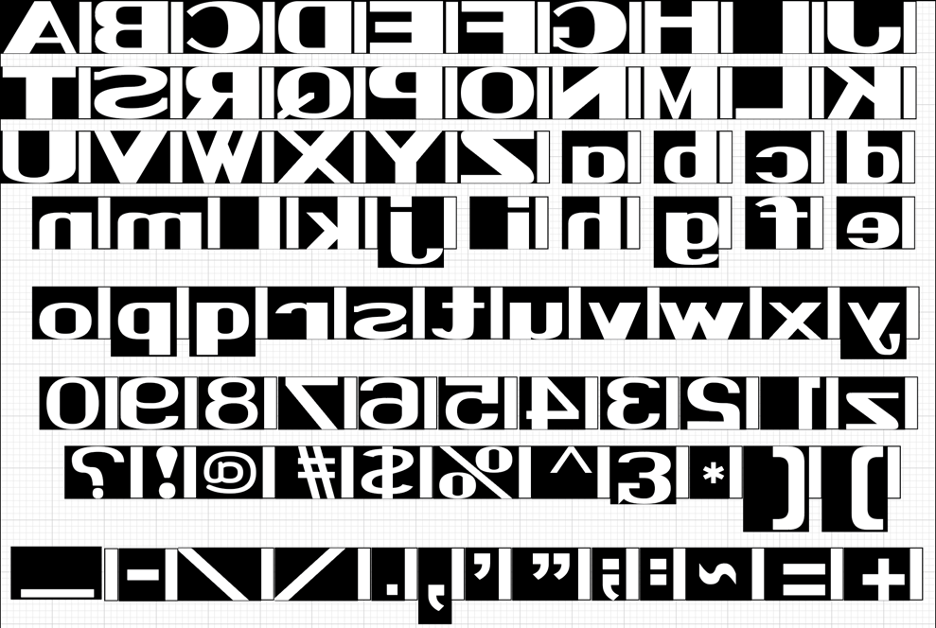In Spring of 2020, I joined the team of faculty, graduate and undergraduate students in the Letterpress Goes 3D project. This multi-faceted project set out with the goal of recreating historical image blocks, moveable type, and printing plates as well as original material creations of digital fonts and images for use in the printing press studio. The Huskiana Press is a modern iteration of Bostonian print culture heritage and takes part in a rich history of print design and manufacturing here in Massachusetts. I originally set out to pay homage to this history by recreating several wood block cuts used in old newspaper prints and booklets from the Boston area. After work I would visit different archives in the area such as the Northeastern Archives, the Howard Gottlieb Archival Research Center at Boston University, the Massachusetts Archives and Common Wealth Museum, and the Massachusetts Historical Society along with the Digital Commonwealth online archival resource. I scoured these collections of records for historical images that could be recreated and utilized in our modern day printing press studio.
However, unfortunately, the world turned on its head in March of 2020 and the global coronavirus pandemic halted the work in the press and closed many of the facilities that were essential to my research. And so my project was suspended. As the following days, weeks, and months altered our daily lives in seemingly unprecedented ways, I began to rethink how my project could evolve to meet the present moment. Many people are saying that the year 2020 has been unprecedented, unparalleled (which then became an email introduction cliché). However, in many ways this year is a mirror reflecting to our past. The coronavirus pandemic has ignited economic downfall due to an infrastructure that is un-equipped to care for its people during time of crisis. This has led me to consider a different time of hardship in this country, the Great Depression. Millions unemployed, state sanctioned racial segregation and violence, and a war looming on the horizon. It can often feel like a broken record, the ways in which this history of white economic oppression and colonization repeats itself. What are the facets of history we wish to bring into the imagined future? What needs to be left behind? What can we learn from? I began thinking of the ways in which the government has responded (or failed to respond) to crisis, then and now. The New Deal of the 1930’s immediately comes to mind, specifically the Works Progress Administration. Under the Federal Project Number One, the fed funded musicians, artists, writers, and theater makers as part of the economic stimulus plan. One product of this project that many are aware of are iconic National Park Service posters. These posters were distributed and funded under the Federal Project Number One, and they typically used a familiar art-deco style of type. My project took on a new focus. I then set out to recreate this classic type face in 72-point font using the laser cutting studio on campus in order to remake several historical posters from the period to make them more relevant and pertinent to the current crisis we face.
In order to use the laser cutter, one must first create a digital rendition of the type case in Adobe Illustrator. The artboard should be 18 in wide and 24 in long as that is the size of the board on our specific laser cutting machine at Northeastern. After a tedious and repetitive process of creating each character (mirroring, outlining, and placing each on a black rectangle) I had my first type case which you can see below.

While campus is still at limited capacity and I am continuing to practice social distancing, I will unlikely be able to print with this font any time soon. However, I wanted to share what the end vision of this project was planned to be (and hopefully will come to fruition some time in the future!). I had hoped to recreate some of these historical Works Progress Administration posters using this retro National Park Service font so that their themes are relatable to the present moment.

https://www.loc.gov/item/98516354/
https://www.loc.gov/item/98507705/
Having material copies of these historical fonts will help to illuminate different aspects of the printing process that may not be initially apparent on first glance. At first, these posters were created by hand, individually painted and lettered. Later on, divisions’ artists usually used the silkscreen process for mass production. These posters are multi layered, with different colors of type and shapes cross hatching each other. We can learn a lot about the coloring process of multi layered images like the WPA posters through recreation. In my first few attempts at printing, I was planning on printing the images onto the paper first, and then creating the type around the images. However, I think it could be a fruitful endeavor to attempt to screenprint some of the images onto poster paper instead, and then run it through the printing press in order to secure the type. This will have to be an experiment for a later date.
While I initially set out to get inky hands on experience with the press, I am grateful to have investigated the digital side of modern print making. Researching through the library of congress for historical prints, figuring out Adobe Illustrator and Adobe Photoshop has been invaluable and is an important aspect of the modern day Huskiana Printing Press as we aim to create an interdisciplinary printing press studio.
